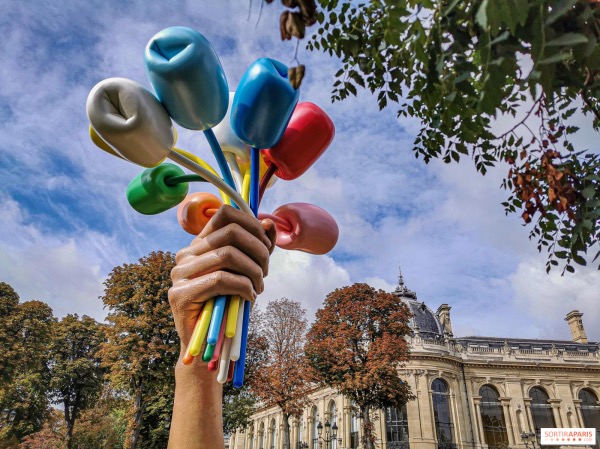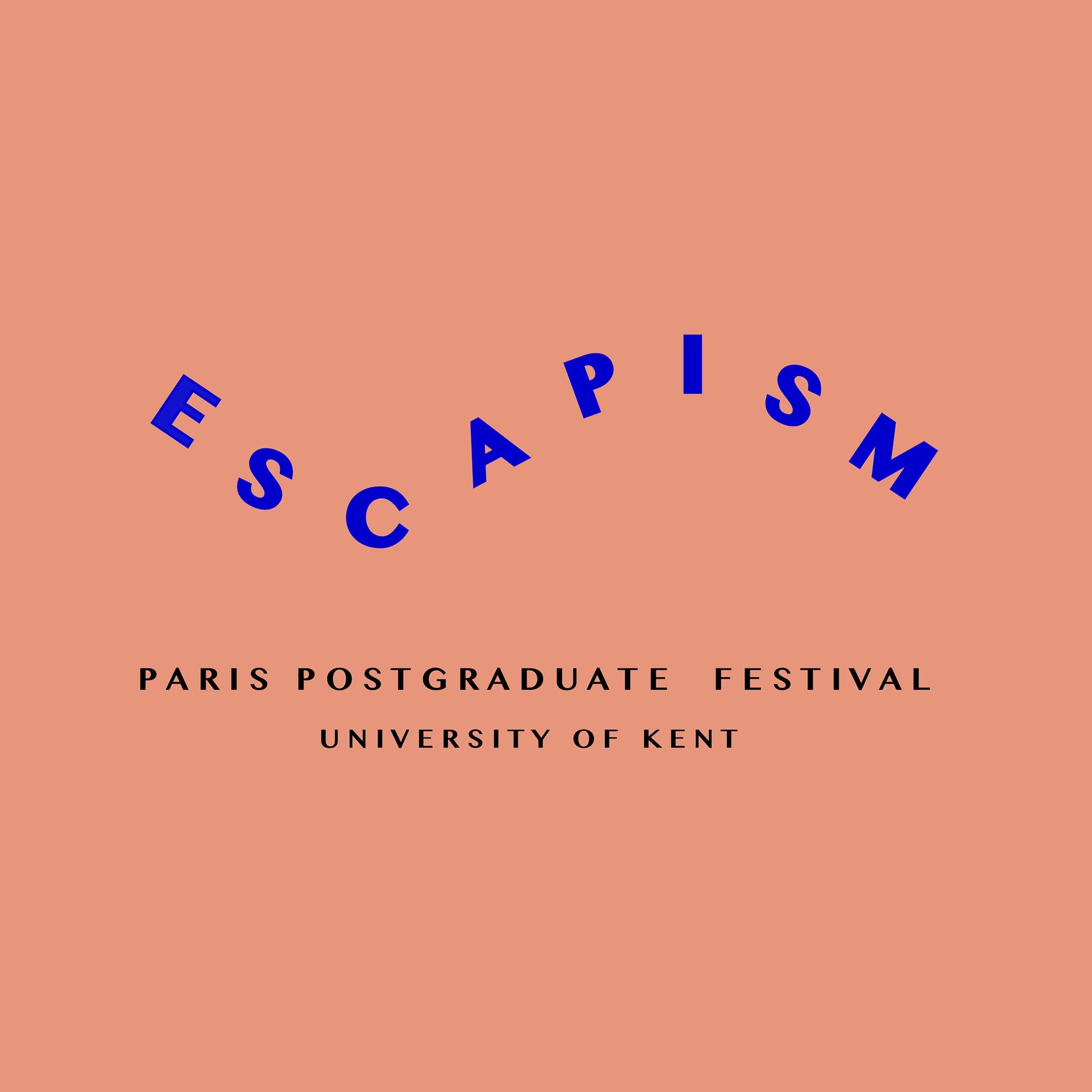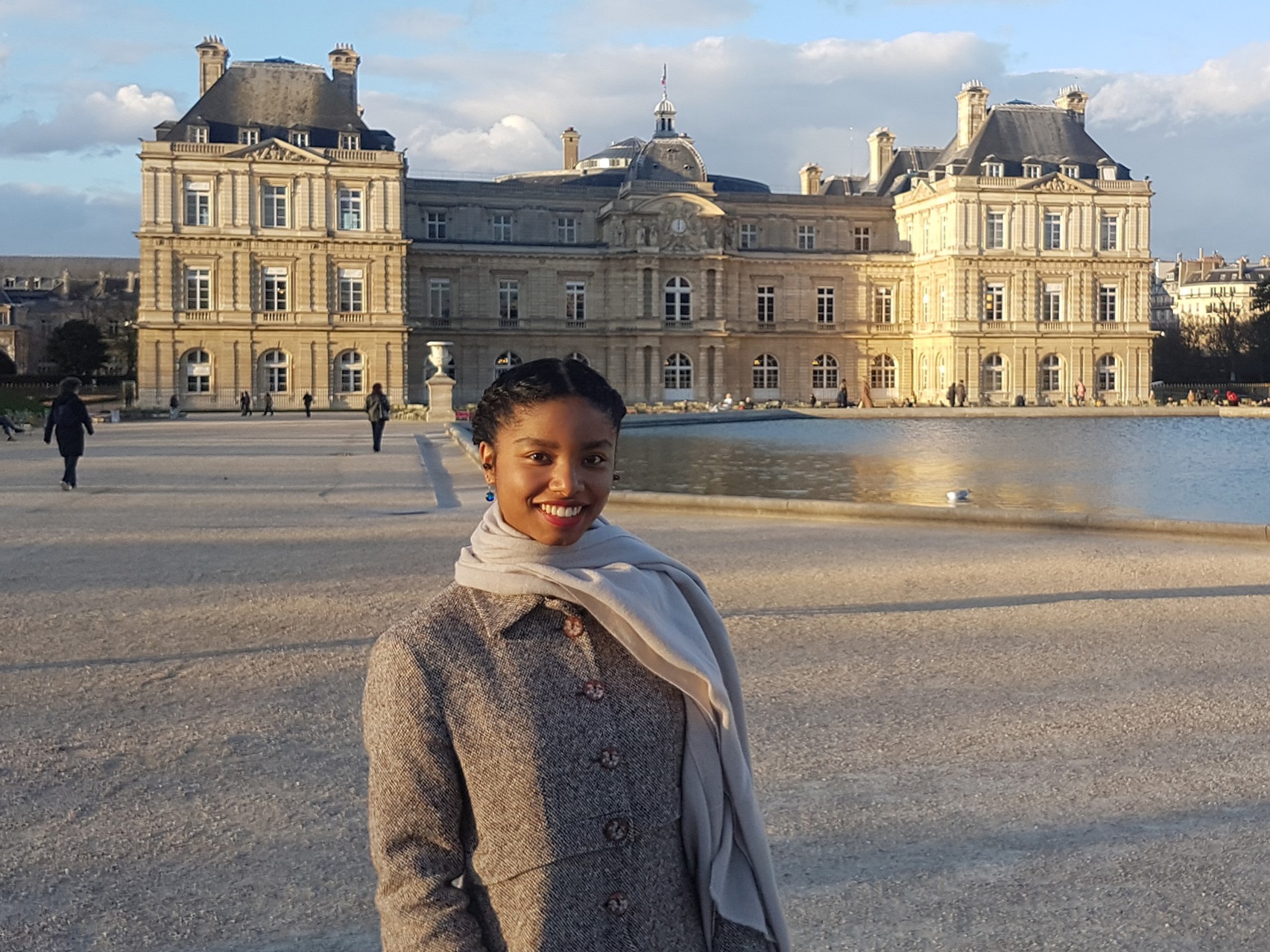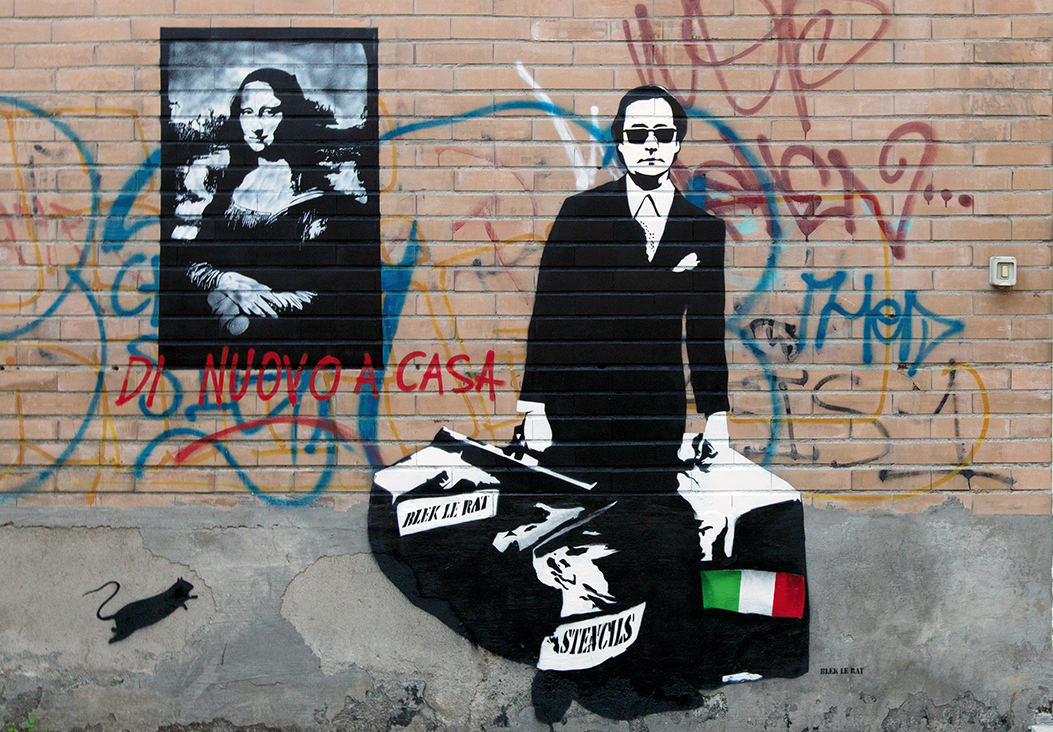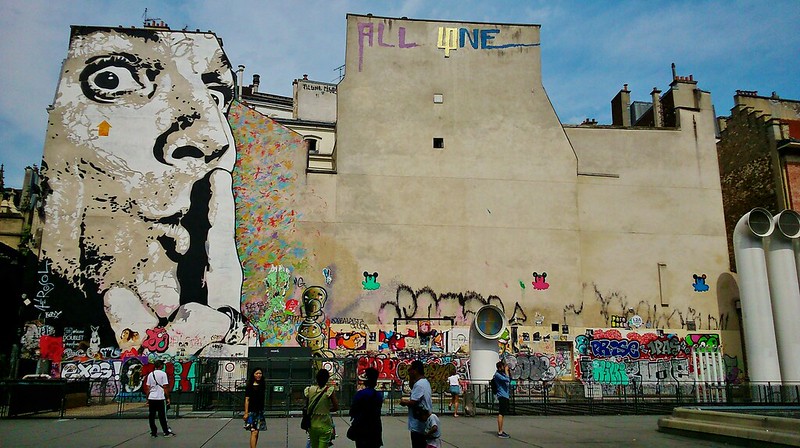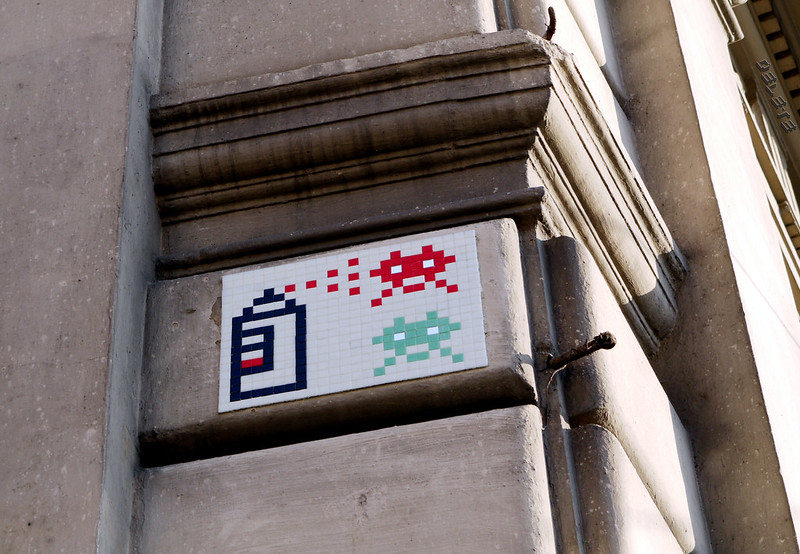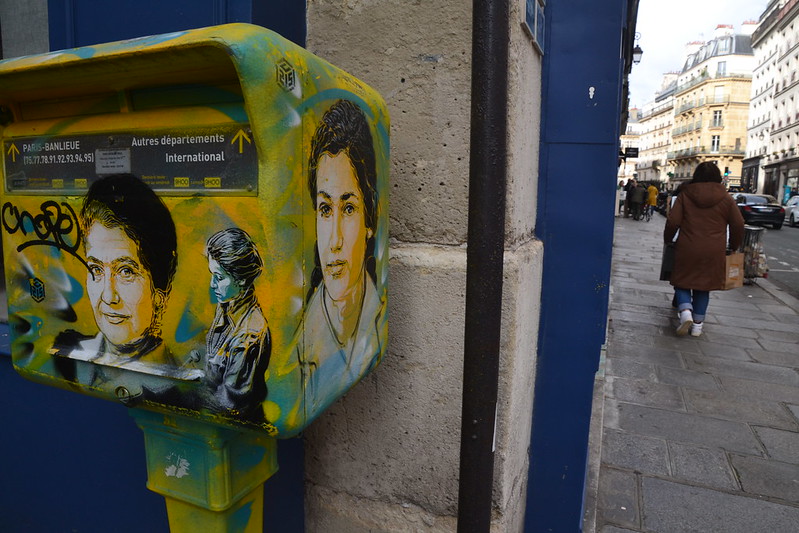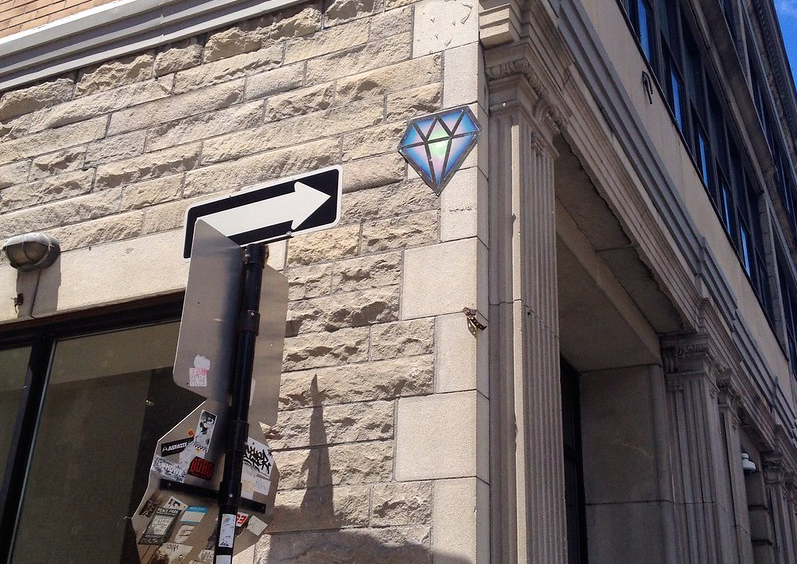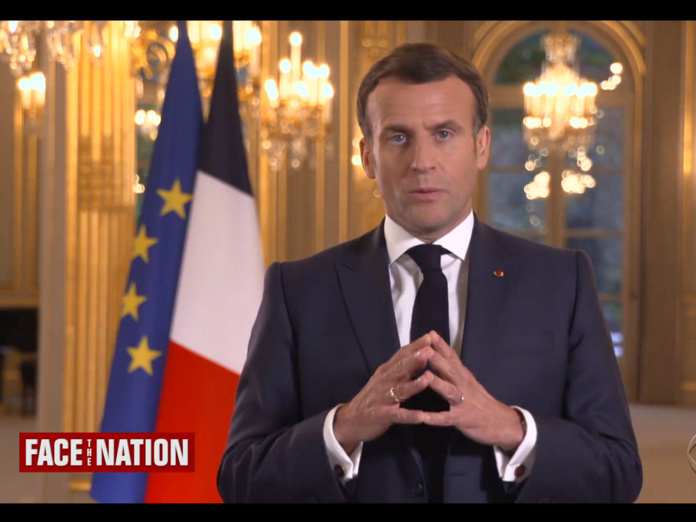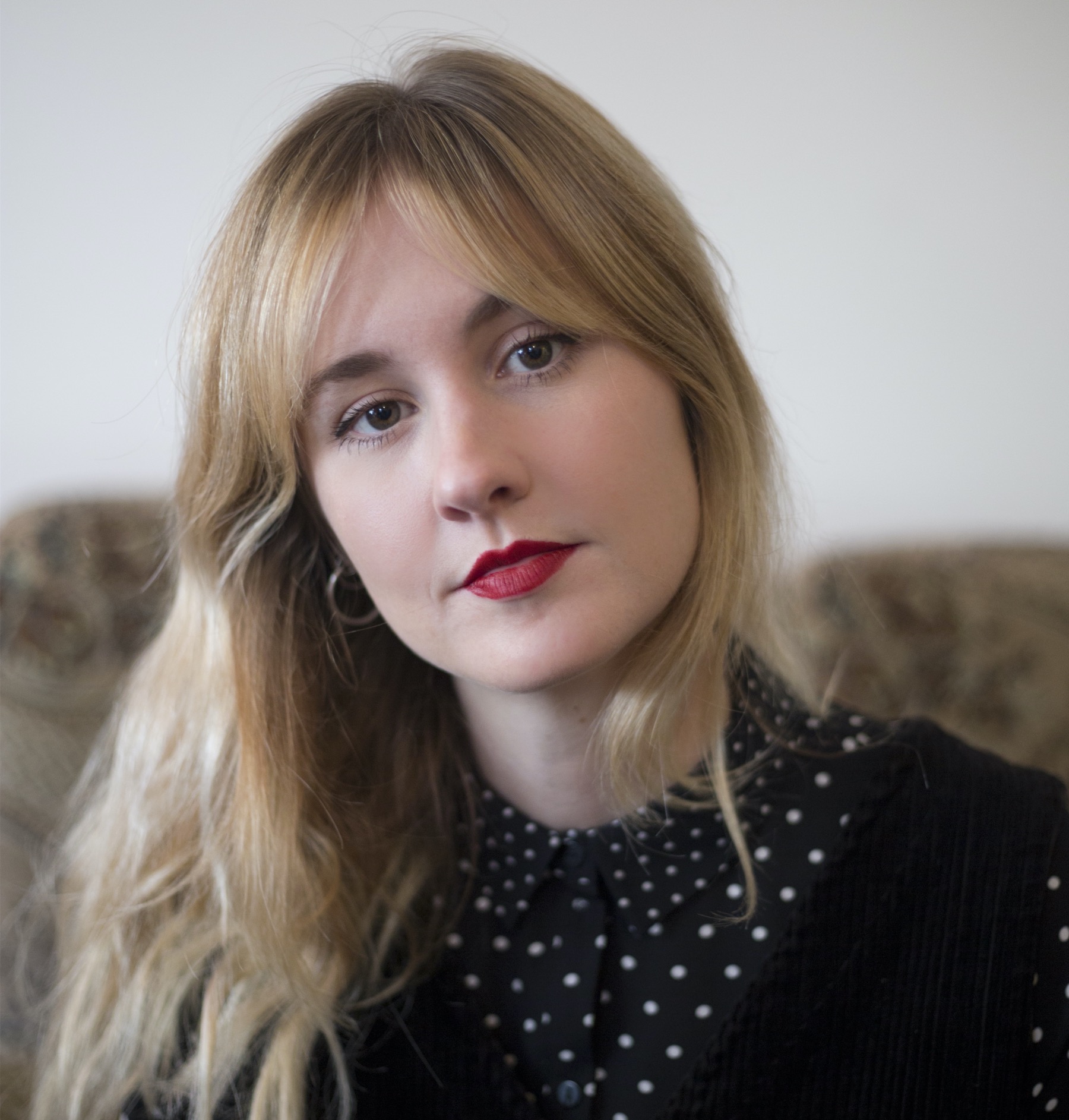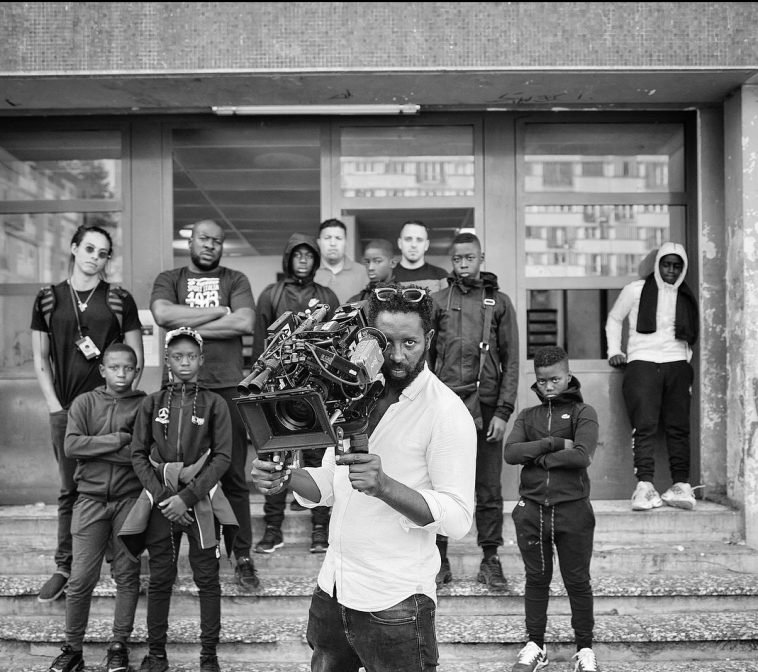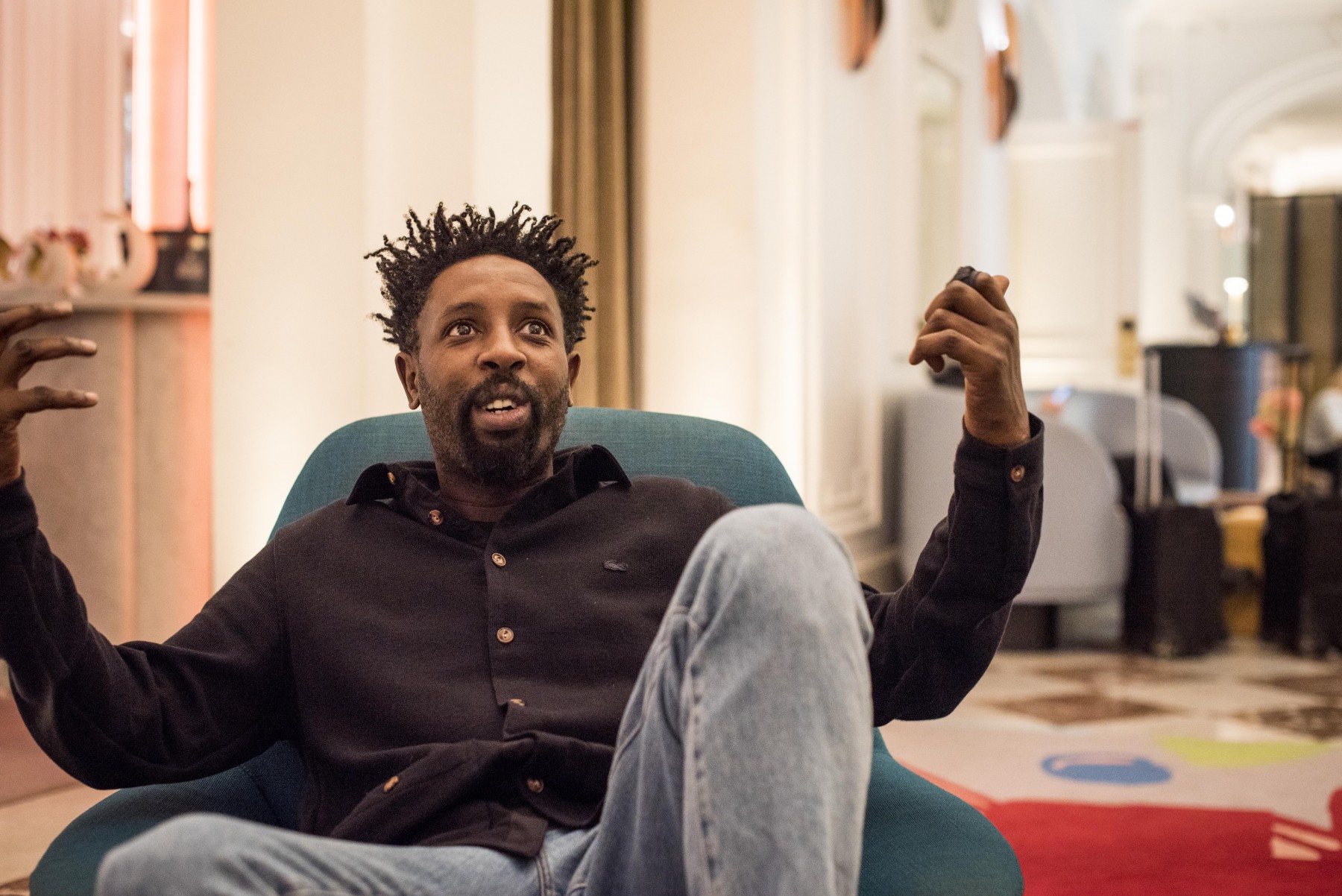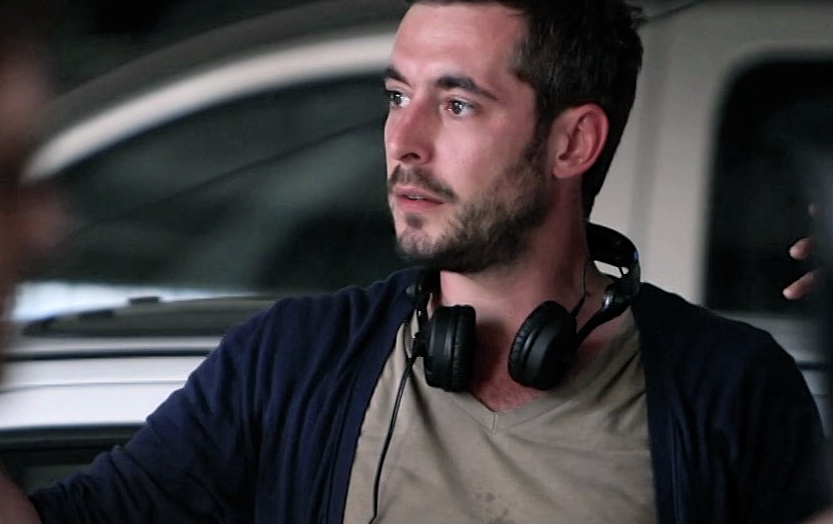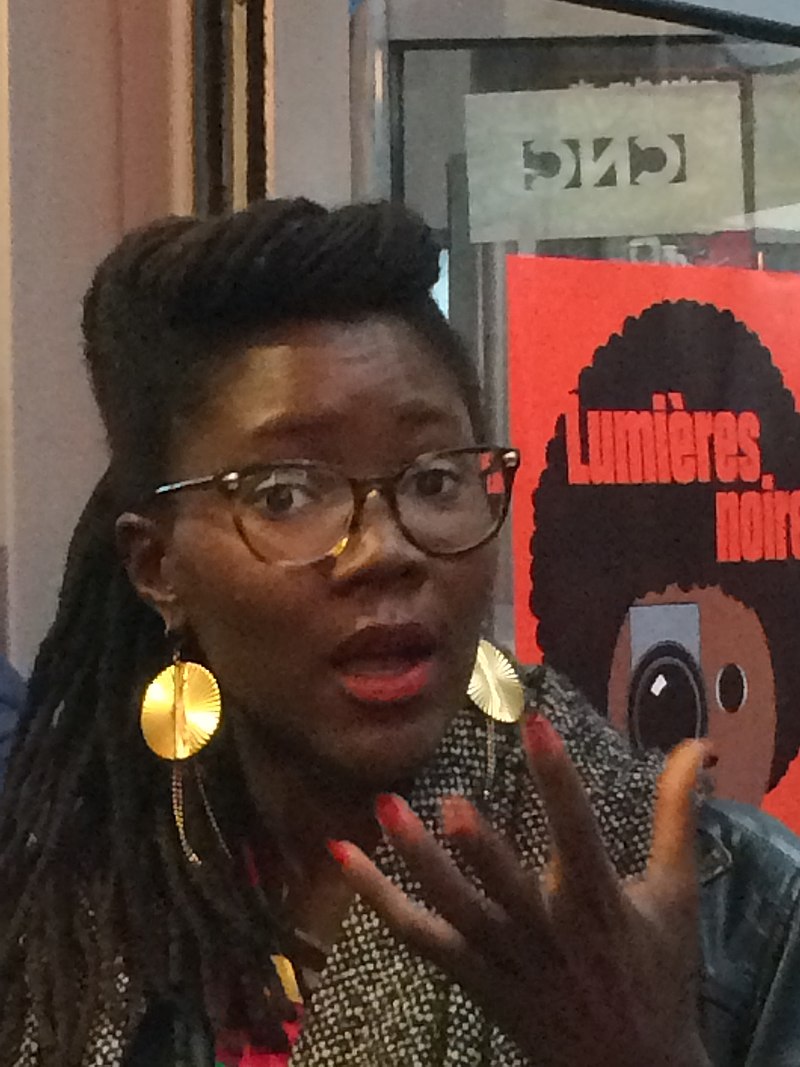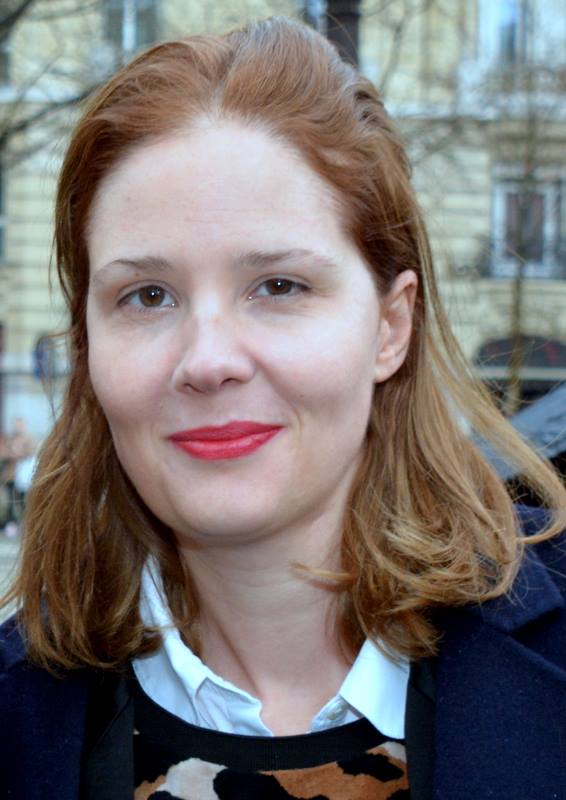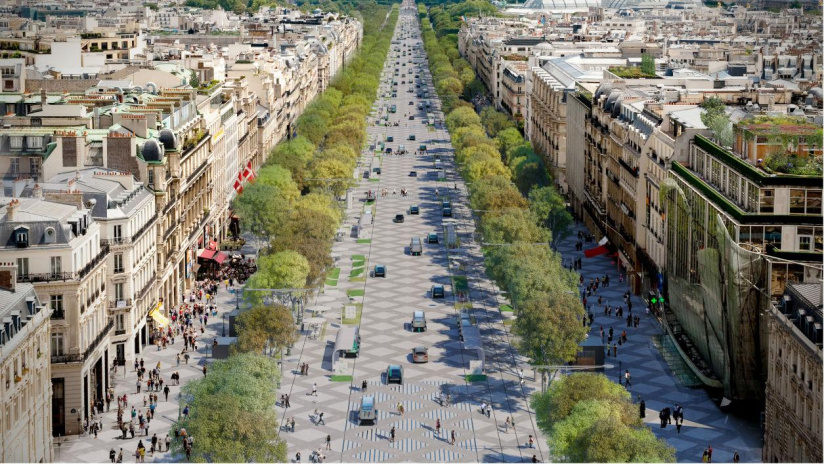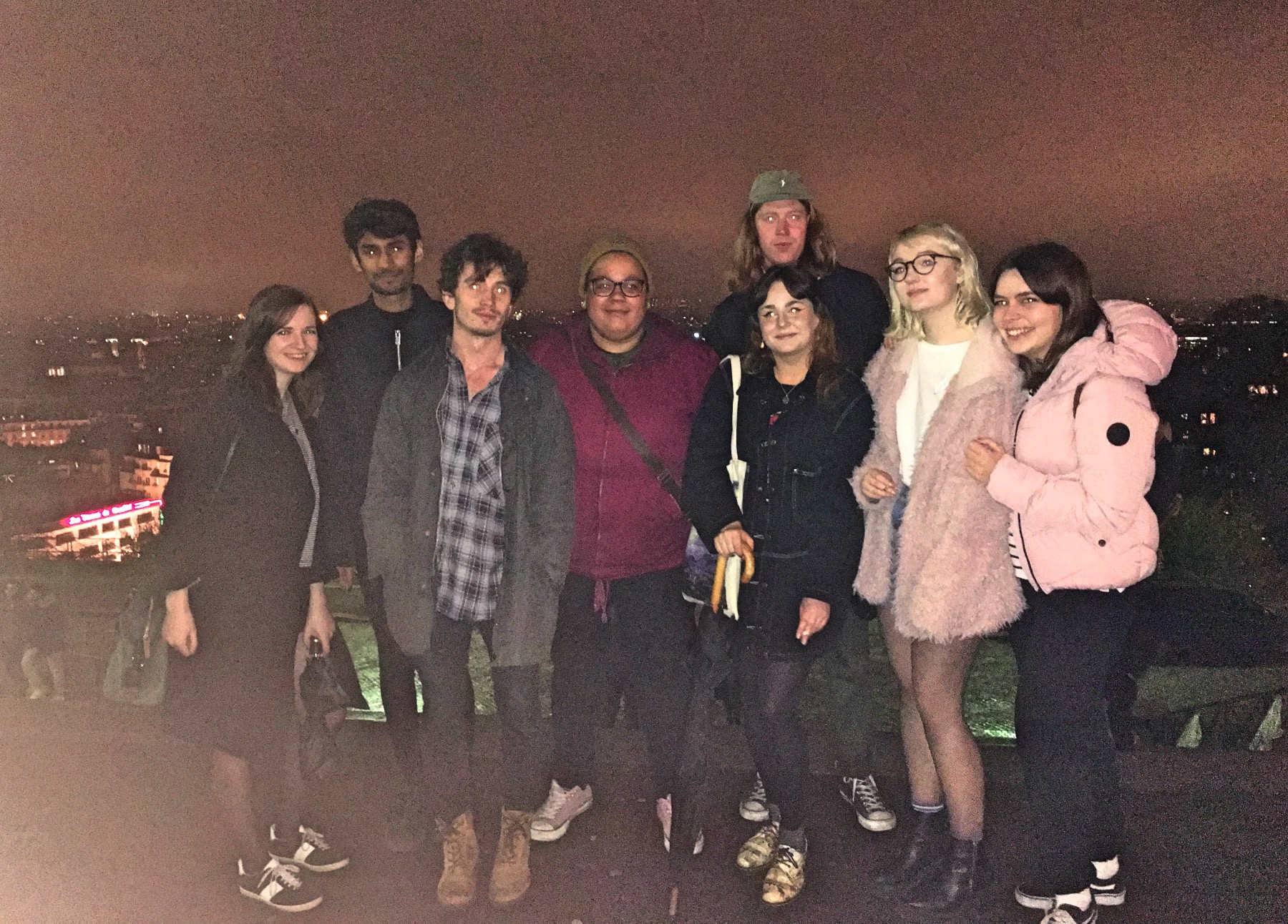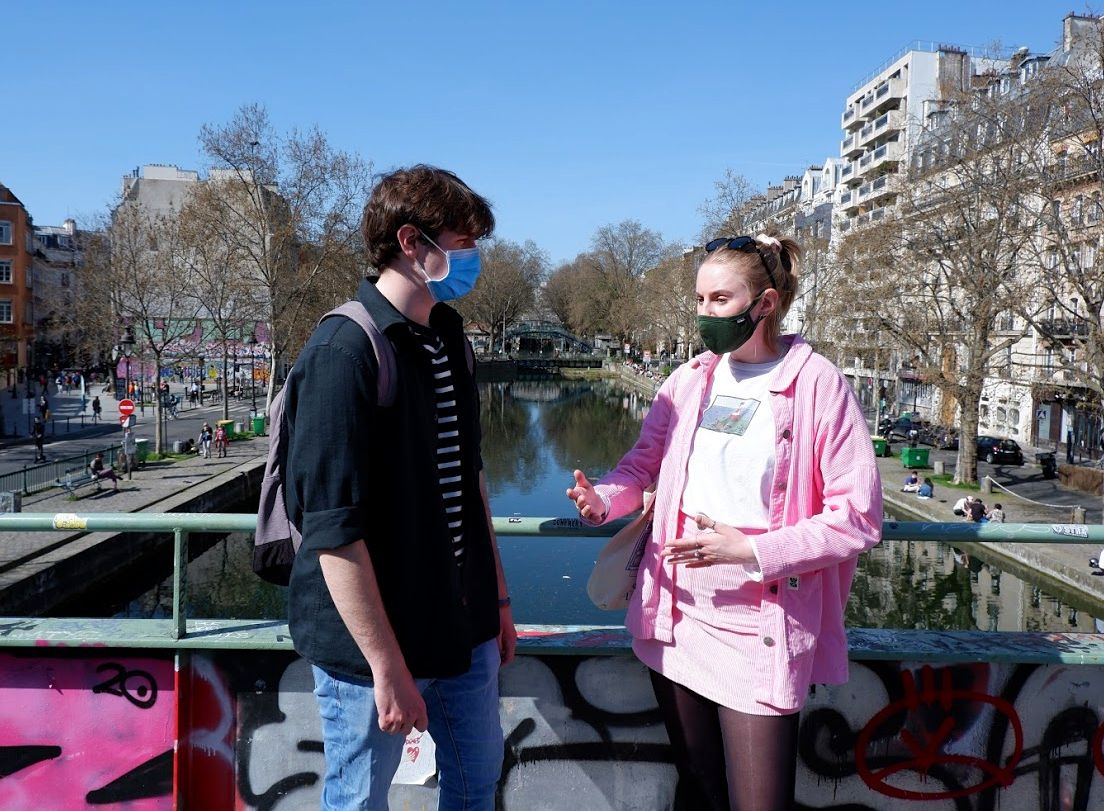Paris is one of the best cities in the world for strolling, the city is an open-air museum for more reasons than the obvious. Its buildings tell the city’s 2000 years of history (including new cutting edge buildings like in this article), but you can also admire some great art, mostly in the form of sculptures, on display in various places around the city. From beautifying the tramway to accentuating parks, here are the some of the best contemporary sculptures displayed around the city.
Bouquet of Tulips, Jeff Koons (above photo)
One of the most recent additions to Paris’s collection of outdoor art is this controversial work by International art superstar Jeff Koons. Inaugurated in October 2019, the oversized bouquet of flowers was gifted by the artist to the city of Paris and its citizens as a gesture of solidarity and hope following the November 2015 terrorist attacks. Nestled within the Champs-Élysées gardens, between the Petit Palais and Place de la Concorde, the ballooning bouquet rises to a height of 12 metres and consists of 11 flowers, instead of the typical dozen, the missing flower symbolising the void caused by the attacks. Not everyone’s cup of tea, but it’s growing on Parisians!
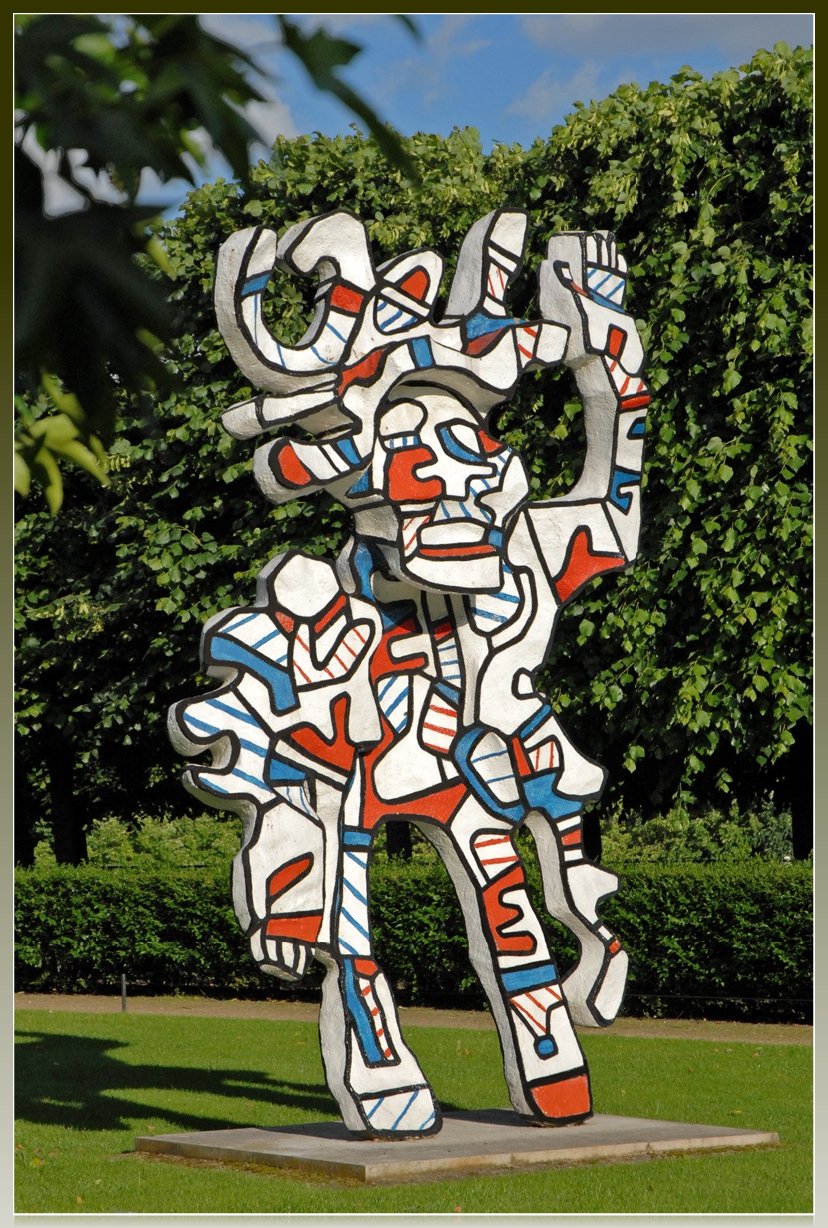
Le Bel costumé, Jean Dubuffet. Photo: Jean-Pierre Dalbéra / Flickr
Le Bel Costumé, Jean Dubuffet
One usually thinks of classical sculptures when imagining the Tuileries Gardens, however, these formal royal gardens are actually home to a number of contemporary and modern sculptures, this being the one that stands out the most. In signature Dubuffet style the four-metre high sculpture, The Beautiful Costume in English, is an outlined figure in white and black with sections of primary colours. Originally designed in 1973 for the entrance to a wing of the National Gallery of Art of Washington, the current piece was created in 1998 and installed in this location in 2000.

Tree of Vowels, Giuseppe Penone. Photo: L R / Flickr
Tree of Vowels, Giuseppe Penone
Also in the Jardin des Tuileries, but contrary to the Dubuffet, this work by Italian artist Giuseppe Penone almost goes unnoticed. Blending perfectly into its natural environment is what appears to be a fallen tree. Penone’s art often relates to nature, and the tree is a common subject matter of his. The work was commissioned by the French State in 1999, the year in which torrential storms felled thousands of trees in and around the capital. Cast in bronze the 30 metre-long sculpture was inaugurated the next year in 2000. Once you find its discreet location (in a side section on the south side of the garden), you can contemplate the work in tranquility on a nearby bench.
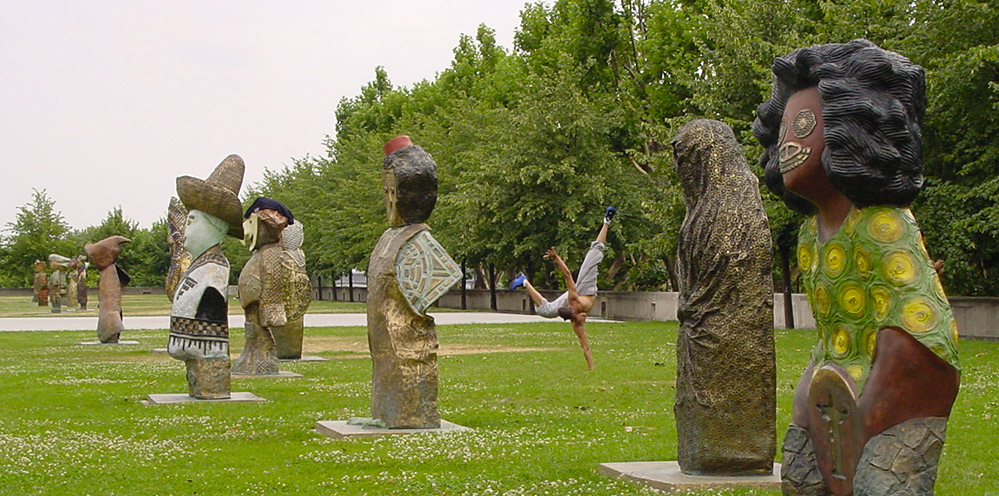
Les Enfants du Monde, Rachid Khimoune. Photo: Rachid Khimoune
The Children of the World, Rachid Khimoune
Installed on a grassy lawn in the east end Parc de Bercy, near the Simone-de-Beauvoir bridge, are these whimsical sculptures by French artist Rachid Khimoune. Commissioned for year 2000, the artist chose to represent the 21st century with 21 bronze statues depicting children from 21 countries. The artist himself has Algerian roots, and on his travels around the globe, he collected urban items, such as cobblestones, sewer plates and broken bitumen, which he used to create the works.
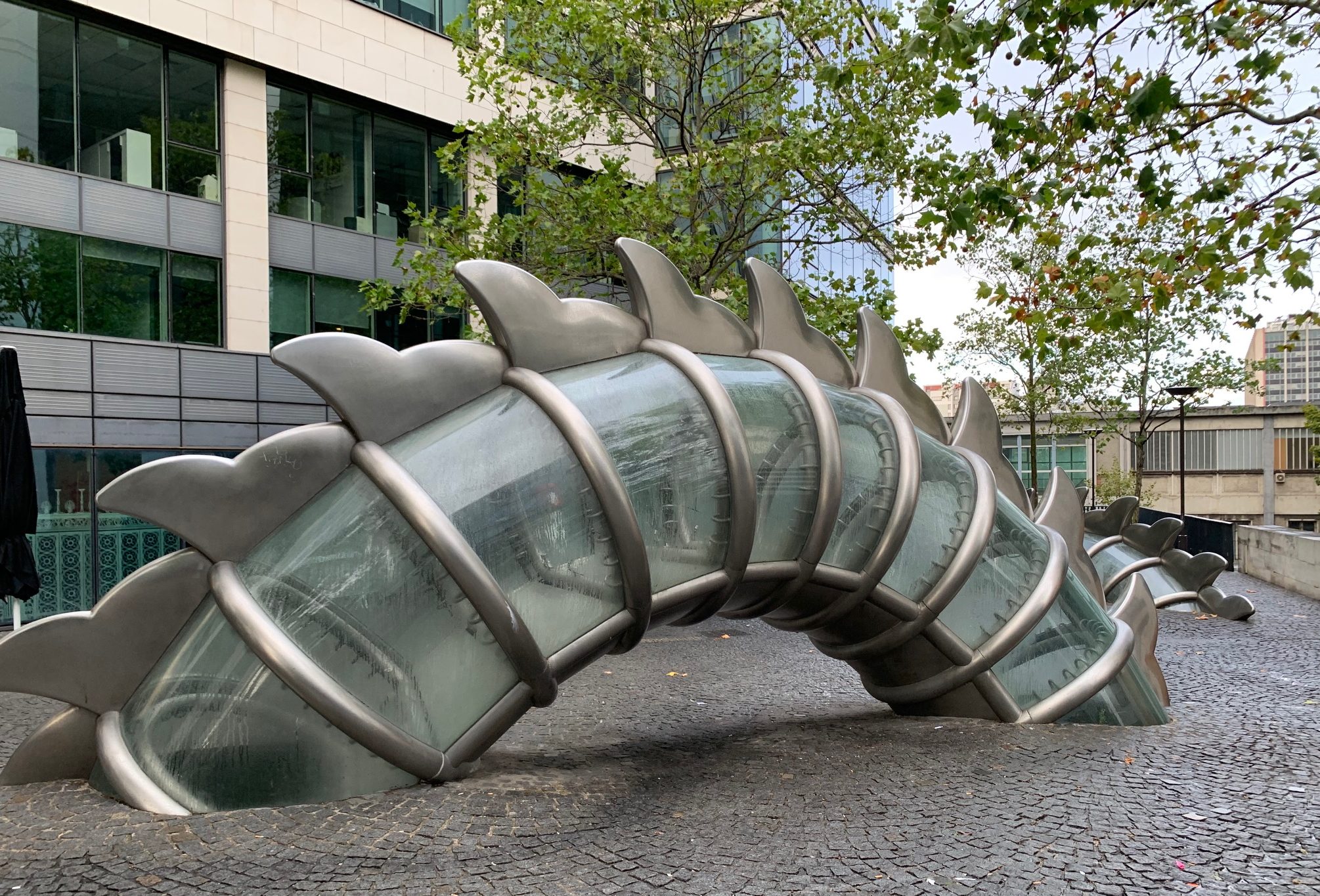
La danse de la fontaine émergente, Chen Zhen and Xu Min. Photo: Une Autre Asie
La Danse de la Fontaine Emergente, Chen Zhen and Xu Min
Emerging from the ground of the Place Augusta-Holmes in the 13th arrondissement is this sculpture by Chen Zhen and Xu Min, The Dance of the Emerging Fountain. The work was a commissioned by the City of Paris in 1999 to French-Chinese artist, Chen Zhen, however, the artist passed away the following year before finishing the work. Fortunately, it was decided that another artist with Chinese roots, Xu Min, would complete the sculpture. The stylised dragon, made of transparent tubes and metal, appears to snake in and out for the paving-stoned ground of the square. The 13th district’s is home to Paris’s largest Chinatown and the dragon is of course an important symbol for the Chinese. A modern “fountain”, the work, which comes out of an underground water storage facility, has water flowing through it and is lit up at night.
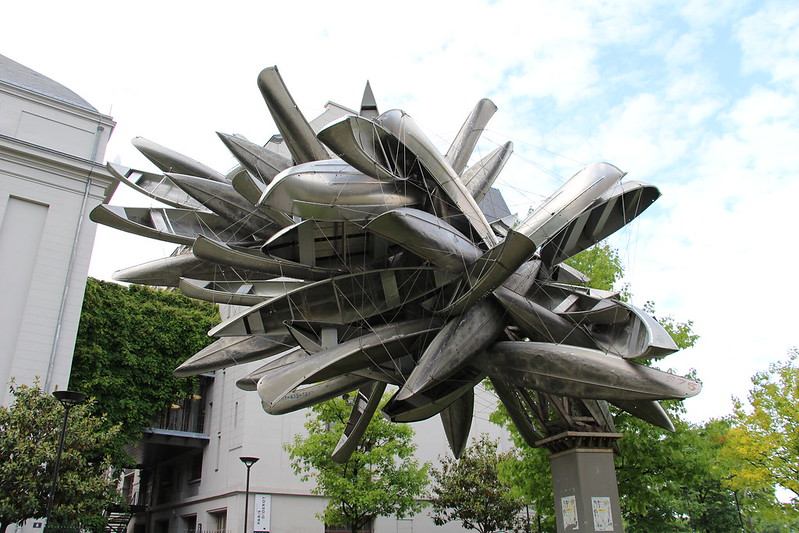
Monochrome for Paris, Nancy Rubins. Photo: Fred Romero / Flickr
Monochrome for Paris, Nancy Rubins
Also found in the 13th district, in the Esplanade Vidal-Naquet, this sculpture by American artist Nancy Rubins was inaugurated in 2013. The monumental work, rising to 10 metres and consists of a grouping of 50 stainless steel canoes and 10 boats, is aptly found near the Seine River. The work falls within the artist’s “Monochrome” series, with similar works in other cities, like Las Vegas and Chicago. It was commissioned, along with 14 works by other artists, by the city of Paris to add a cultural touch to the T3 tramway line. You can hop on and off the tram to see all the works, including 1SQMH (One Square Meter House) by French artist and architect Didier Fiuza Faustino (Porte d’Ivry station), Tchaïkovski by the French artist Claude Lévêque (Montsouris), From Boullée to Eternity by American artist Dan Graham (Porte de Versailles) and “Murmurs,” a sound installation by French artist Christian Boltanski (Cité Universitaire).

The Centaur, César. Photo: Oeil de Verre / Flickr
The Centaur, César
Although this work is a little older, its central location in Place Michel Degré in the 6th arrondissement means that you’ll likely walk by it at some point during your time in Paris. Made by prominent French artist César Baldaccini, the original model of the sculpture, the half-man half horse figure from Greek Mythology, was created by the artist in 1976 as a tribute to great Pablo Picasso. If you look closely you can find a small statue of Liberty hiding in the breastplate of the centaur. The sculpture was among 100 works commissioned by the Minister of Culture Jack Lang in 1983. You can see another momental work by César, The Thumb (1994), at La Défense, the business district located to the west of Paris which is home to a number of other modern and contemporary sculptures.
Sculpture lovers may also want to take a stroll through the Jardin Tino Rossi, a park located along the Seine in the 5th district which contains the Musée de la Sculpture en Plein Air, an open-air sculpture museum with thirty sculptures, including another work by César as well as works by Brancusi and Zadkine.
If you’re interested in exploring more urban art in Paris, have a look at our article on the top street artists in Paris.
Top Photo: Bouquet of Tulips, Jeff Koons – Sortir a Paris
